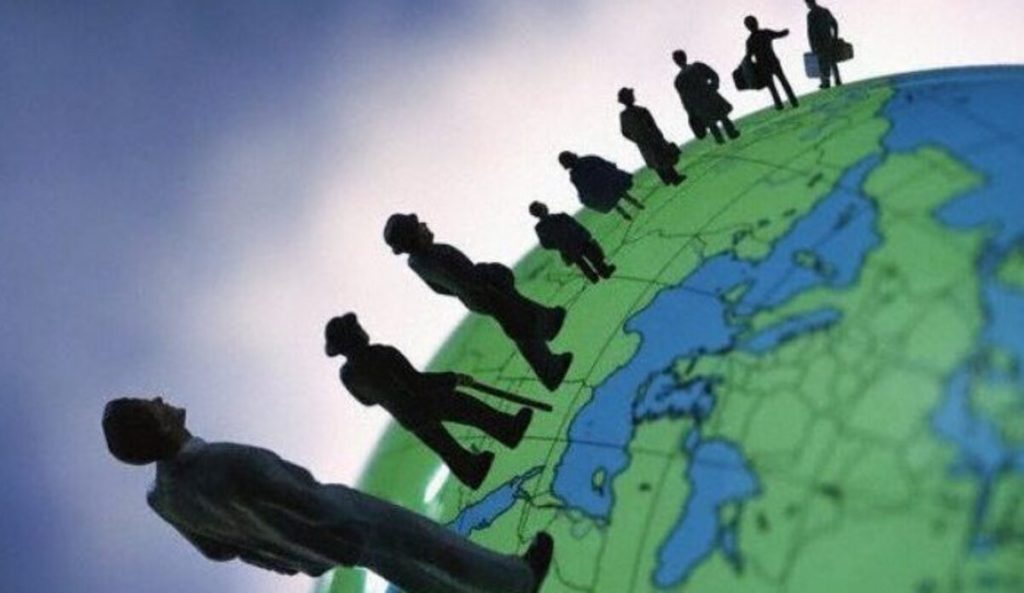Author: Elaine Lebon-McGregor
Dossier: Can we govern migration better?
Guest-editor: Elaine Lebon-McGregor
Recent years have seen the topic of migration rise to the top of political agendas in many parts of the Western world, propelled by the images of overcrowded boats on the Mediterranean and migrant caravans in Central America.
This has led to several key developments in the migration governance landscape. Migration was a central feature of the campaign that ultimately saw the United Kingdom leave the European Union (EU) on the 1 January 2021. Just over a year ago, on 23 September 2020, the EU proposed a new Pact on migration and Asylum to, among other goals, rebuild ‘trust between Member States and confidence in the capacity of the European Union to manage migration’.
Yet beyond these ‘crises’ that have dominated our thinking about migration, the landmark signing of two non-binding global compacts at the UN General Assembly in 2018, one on safe, orderly and regular migration, and the other on refugees, illustrates the culmination of a century of efforts to develop an, albeit not legally binding, normative and institutional framework to govern migration. This, however, represents just one part of the story of migration governance.
The articles in this special dossier introduce the reader to some key issues of relevance to migration governance from a multilevel perspective and present a diverse picture of what migration governance means to a range of academics and practitioners. There are inevitably gaps, and voices are missing, however the articles in this dossier offer a first glimpse into the complex reality of migration governance.
In this introductory article we introduce some key concepts that will be useful to the reader as they navigate the articles in the series.
What is governance?
Governance finds its roots in the Greek verb kubernân meaning to pilot or to steer and in the Latin gubernare, which has similar connotations. Since the 1990s, the term governance has increasingly been used to capture changes in the relationship between state and society, including those fuelled by globalization. Globalization has led to increasing interconnectedness, which has resulted in increasingly complicated policy problems affecting the ability of national governments to govern effectively. At the same time, with growing populations, and shrinking budgets, states have increasingly outsourced service provision to non-state actors. Addressing policy problems today generally requires cooperation and coordination between a range of different actors operating at different levels of governance, and often across international borders.
What is migration governance?
According to Demetrios G. Papademetriou, co-founder of the Migration Policy Institute, the global governance of migration can be ‘loosely defined as the creation of a more or less formal set of norms and rules to regulate the behaviour of states with respect to the movement of people across international borders’. The International Organization for Migration (IOM) define migration governance as:
‘The combined frameworks of legal norms, laws and regulations, policies and traditions as well as organizational structures (sub-national, national, regional, and international) and the relevant processes that shape and regulate States’ approaches with regard to migration in all its forms, addressing rights and responsibilities and promoting international cooperation’.
Thus, on the one hand, governance refers to the actions of governments navigating increasingly complex configurations of actors, and on the other to the solving of global problems through the creation of systems of rules for, and often by, these very same networks.
How has migration governance evolved?
Historically it has been extremely challenging to achieve agreement on an overall set of norms, rules, or principles to govern migration at the global level which has resulted in a fragmented migration governance landscape. One need not look further than the ratification rates of the three main international conventions in the area of migration. Less than half of UN Member States have ratified at least one of the three migration-related conventions (C97, C143, and the ICRMW), with the most notable non-ratifying states being those receiving the highest numbers of migrants in the world (such as the United States of America).
Migration, or perhaps more aptly, the control over one’s borders, is so central to the notion of state sovereignty that it continues to be a politically sensitive issue. Yet in reality aspects of migration governance are shared with non-state and sub-national state actors, be that non-governmental actors providing services to undocumented migrants, airlines indirectly implementing border control through the implementation of processes designed to avoid incurring carrier sanctions, international intergovernmental organizations such as IOM facilitating refugee resettlements and returns, or local governments supporting the integration of migrant populations. Ultimately, this controversy has resulted in the emergence of what leading migration governance scholar Alexander Betts describes as ‘a complex and fragmented tapestry of overlapping, parallel, and nested institutions’.
The most advanced governance regime, argues Betts, is the refugee regime. The 1951 Refugee Convention and its 1967 Protocol overseen by the United Nations High Commissioner for Refugees (UNCHR) provide a clear normative framework to govern the movement of refugee populations. However, with increasing prevalence of displacement for reasons not captured by the 1951 definition, the coherence and relevance of the refugee regime has also been scrutinized.
While a global normative framework for governing labour migration has been developed, embodied in the Migrant Worker Conventions, other conventions on labour conditions, and consolidated in the International Labour Organization’s (ILO) 2006 Multilateral Framework on Labour Migration, the actual governance of labour mobility often occurs at the regional and bilateral level. At the regional level, mobility related agreements in regional economic communities, such as the Schengen Agreement in Europe or the African Union’s Protocol on Free Movement. At the bilateral level, states often negotiation bilateral labour agreements to facilitate mobility, generally between a country of origin and a country of destination. Examples include the Employment Permit System developed by the Government of the Republic of Korea, bilateral agreements signed through Germany’s Triple Win programme primarily targeting the mobility of health workers, or seasonal migration programmes, such as Canada’s Seasonal Agricultural Workers Program.
The governance of other aspects of human mobility, such as international student mobility, irregular migration, lifestyle migration, international travel also exhibit differences in the institutional and normative frameworks lending credence to the importance of considering migration governance as a multilevel phenomenon.
Understanding migration governance as a multilevel phenomenon
Multi-level governance has emerged as a way of understanding how and why specific policy issues are governed in different ways. Conceptualizing migration governance as a multilevel phenomenon allows us to shine a light on key issues at different levels of governance. Hence, in this series we will take a journey through a selected number of examples that highlight aspects of migration governance at the global, regional, national, and sub-national level, drawing on theoretically and empirically driven insights that cut across cross disciplinary lines.
The articles address a number of pertinent questions relating to migration governance. What is the role of global norms in migration governance? How is migration governance understood in different regional contexts? What role do local actors play in migration governance? How does crisis affect the way we govern migration? How can we better measure and analyse migration governance in order to promote better migration governance? What is the future of migration governance?
We hope that the articles in this series will provide input for discussions and open new ways of thinking about migration governance.
Elaine Lebon-McGregor is a researcher at UNU-MERIT. Her PhD research focused on the evolution of migration as a global policy issue and the role of international organizations in this process. Her main research focus area is migration governance, with a particular interest in the role of different actors (such as national governments, local municipalities, international organizations, civil society organizations) in the governance of migration and how this has evolved over time.

Source
Kjær, A. M. (2004). Governance. Polity Press.
Papademetriou, D. G. (2011). The Governance of International Migration. Defining the Potential for Reform in the Next Decade. Council Statement from the 6th Plenary Meeting of the Transatlantic Council on Migration. (p.1)
IOM (2019) Glossary on Migration. IOM, Geneva.
Lebon-McGregor, E. (2020) International Organizations and Migration Governance. Boekenplan.
Betts, A. (ed.) (2011) Global Migration Governance. Oxford University Press (p.2)
Bache, I., & Flinders, M. V. (Eds.). (2004). Multi-level Governance. Oxford University Press.
